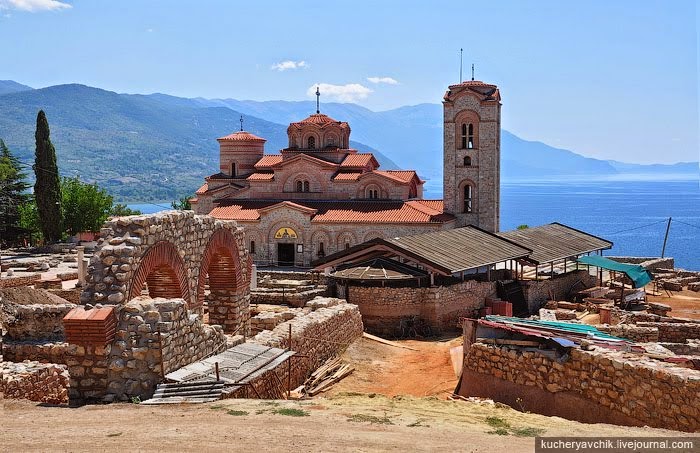Portuguese Republic
President: Aníbal Cavaco Silva (2006)
Prime Minister: Pedro Passos Coelho (2011)
Land area: 35,382 sq mi (91,639 sq km);
total area: 35,672 sq mi (92,391 sq km)
Population (2014 est.): 10,813,834 (growth rate: 0.12%); birth rate: 9.42/1000; infant mortality rate: 4.48/1000; life expectancy: 79.01
Capital and largest city (2011 est.) Lisbon, 2.843 million
Other large city: Porto, 1.367 million (2011)
Monetary unit: Euro (formerly escudo)
An early Celtic tribe, the Lusitanians, are believed to have been the first inhabitants of Portugal. The Roman Empire conquered the region in about 140 BC Toward the end of the Roman Empire, the Visigoths had invaded the entire Iberian Peninsula.
Portugal won its independence from Moorish Spain in 1143. King John I (1385–1433) unified his country at the expense of the Castilians and the Moors of Morocco. The expansion of Portugal was brilliantly coordinated by John's son, Prince Henry the Navigator. In 1488, Bartolomeu Dias reached the Cape of Good Hope, proving that Asia was accessible by sea. In 1498, Vasco da Gama reached the west coast of India. By the middle of the 16th century, the Portuguese empire extended to West and East Africa, Brazil, Persia, Indochina, and the Malayan peninsula.
In 1581, Philip II of Spain invaded Portugal and held it for 60 years, precipitating a catastrophic decline in Portuguese commerce. Courageous and shrewd explorers, the Portuguese proved to be inefficient and corrupt colonizers. By the time the Portuguese monarchy was restored in 1640, Dutch, English, and French competitors had begun to seize the lion's share of the world's colonies and commerce. Portugal retained Angola and Mozambique in Africa, and Brazil (until 1822).
President: Aníbal Cavaco Silva (2006)
Prime Minister: Pedro Passos Coelho (2011)
Land area: 35,382 sq mi (91,639 sq km);
total area: 35,672 sq mi (92,391 sq km)
Population (2014 est.): 10,813,834 (growth rate: 0.12%); birth rate: 9.42/1000; infant mortality rate: 4.48/1000; life expectancy: 79.01
Capital and largest city (2011 est.) Lisbon, 2.843 million
Other large city: Porto, 1.367 million (2011)
Monetary unit: Euro (formerly escudo)
An early Celtic tribe, the Lusitanians, are believed to have been the first inhabitants of Portugal. The Roman Empire conquered the region in about 140 BC Toward the end of the Roman Empire, the Visigoths had invaded the entire Iberian Peninsula.
Portugal won its independence from Moorish Spain in 1143. King John I (1385–1433) unified his country at the expense of the Castilians and the Moors of Morocco. The expansion of Portugal was brilliantly coordinated by John's son, Prince Henry the Navigator. In 1488, Bartolomeu Dias reached the Cape of Good Hope, proving that Asia was accessible by sea. In 1498, Vasco da Gama reached the west coast of India. By the middle of the 16th century, the Portuguese empire extended to West and East Africa, Brazil, Persia, Indochina, and the Malayan peninsula.
In 1581, Philip II of Spain invaded Portugal and held it for 60 years, precipitating a catastrophic decline in Portuguese commerce. Courageous and shrewd explorers, the Portuguese proved to be inefficient and corrupt colonizers. By the time the Portuguese monarchy was restored in 1640, Dutch, English, and French competitors had begun to seize the lion's share of the world's colonies and commerce. Portugal retained Angola and Mozambique in Africa, and Brazil (until 1822).
Tags: the wide world snaps, whole world pictures, Portugal beautifull pictures, Portugal pics, Portugal cities, Portugal country,whole world pics,beautifull countries,



























.jpg)

.jpg)











.jpg)





.jpg)





.jpg)










.jpg)
_Naples%2C_Campania%2C_Italy%2C_South_Europe.jpg)

